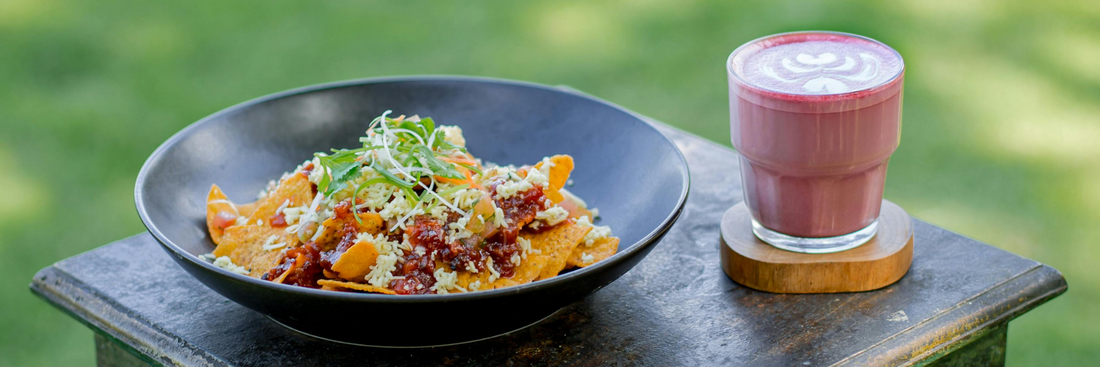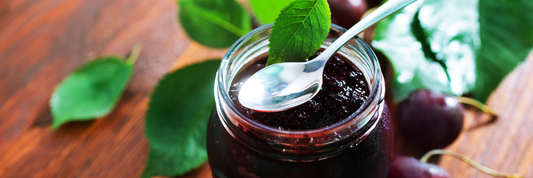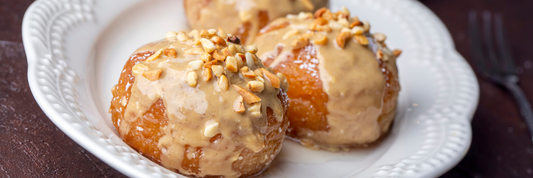Cheese without dairy? What once sounded impossible is now a booming global trend. Plant-based cheese has grown from humble beginnings into a thriving category driven by health, ethics, and sustainability. Yet, with so many new products on the market, businesses face a challenge: how to stand out and build trust with conscious consumers.
In this guide, we’ll explore the history, purpose, and future of Plant-Based Cheese from its earliest recipes to cutting-edge innovations. And because packaging plays a crucial role in both freshness and branding, we’ll also show how eco-friendly packaging from Kimecopak helps vegan cheese makers deliver quality while staying true to their values.
- 10 Vegan Cheesecake Recipes You Should Try
- Is Cheese Healthy? The Pros, Cons & Nutrition Facts You Need to Know
- Discover the Must-Know Cheese Trends 2025
Understanding Plant-Based Cheese

What Is Plant-Based Cheese?
Plant-based cheese is a dairy-free alternative made from ingredients like nuts (cashews, almonds), soy, coconut oil, oats, or even legumes. Unlike traditional cheese, it contains no animal-derived milk but is designed to replicate the taste, texture, and meltability of dairy cheese. Modern innovations have made plant-based cheeses creamier, more flavorful, and closer to authentic cheese than ever before.
Why Is Plant-Based Cheese Becoming a Staple in Modern Diets?
The shift toward plant-based living is fueled by multiple factors:
- Health-conscious choices: Many consumers are reducing dairy for better digestion, lower cholesterol, and fewer allergens.
- Sustainability: Plant-based cheese has a smaller carbon footprint and aligns with eco-friendly lifestyles.
- Ethical living: With rising awareness of animal welfare, more people are opting for dairy-free alternatives.
- Convenience & variety: From vegan mozzarella for pizza to cashew-based cream cheese, the variety appeals to both vegans and flexitarians.
The Growth of the Vegan Cheese Market
The vegan cheese industry is experiencing explosive growth worldwide. According to market research, the global plant-based cheese market is projected to surpass USD 7 billion by 2030, with North America leading in product innovation and consumer demand. Supermarkets, cafés, and restaurants are increasingly offering plant-based cheese as a standard menu item, signaling that vegan cheese is no longer a niche product — it’s becoming mainstream.
The First Vegan Cheeses
Early Origins: Soy & Nut-Based Foundations
The earliest forms of vegan cheese appeared in the 1970s and 1980s, primarily made from soy protein or ground nuts. These products were created for people who avoided dairy for ethical, religious, or health reasons. At the time, options were extremely limited, and recipes often focused more on being dairy-free than on replicating the flavor and meltability of traditional cheese.
Challenges in Texture, Melting, and Flavor
Early vegan cheeses struggled with:
- Texture – often rubbery or chalky compared to smooth dairy cheese.
- Meltability – most varieties would not soften or stretch when heated, making them less appealing for pizza or grilled cheese.
- Flavor – lacking the complexity of dairy cheese, early vegan versions were described as bland or artificial.
These challenges made it difficult for vegan cheese to win over mainstream consumers, though it gained traction among dedicated vegans and allergy-conscious eaters.
Consumer Perception of Early Vegan Cheeses
In the beginning, vegan cheese had a reputation for being a “compromise food” something people settled for rather than craved. Many consumers viewed it as a substitute rather than a true alternative. However, it served an important purpose: it opened the door to innovation and proved that dairy-free cheese could exist on grocery shelves.
Comparison With Dairy Cheese Substitutes of the Past
Compared to older dairy substitutes (like margarine replacing butter), early vegan cheese faced a steeper climb. While margarine quickly became a mainstream pantry item, vegan cheese initially remained niche because it couldn’t fully deliver the taste experience people expected from dairy.
Yet, just as margarine evolved into healthier, plant-based spreads, vegan cheese has undergone a remarkable transformation now boasting improved taste, meltability, and wide consumer acceptance.
The Purpose of Vegan Cheese

Health-Driven Motivations
For many consumers, the journey toward vegan cheese begins with personal health. Lactose intolerance is one of the most common global dietary issues, affecting millions who love cheese but can’t comfortably digest dairy. Beyond that, nutritionists increasingly encourage reducing saturated fat and cholesterol, both of which are abundant in traditional cheese. Plant-based cheese provides a delicious bridge allowing people to enjoy the creamy, tangy, or sharp notes of cheese without compromising heart health. In fact, many nut- and oat-based cheeses deliver extra fiber, vitamins, and healthy fats that dairy cheese simply doesn’t offer.
Ethical Motivations: Animal Welfare & Sustainability
Another powerful driver is ethics. Cheese is more than food; for some, it’s a reflection of values. Traditional dairy production often involves animal welfare concerns, from intensive farming to treatment of livestock. Choosing vegan cheese allows consumers to enjoy the cultural and sensory joy of cheese while aligning with cruelty-free living.
But the motivation doesn’t stop with animal welfare. Sustainability-conscious eaters see vegan cheese as part of a planet-first lifestyle. Every bite becomes an act of participation in reducing greenhouse gases, saving water, and conserving farmland that would otherwise go to livestock feed. It’s food with a conscience.
Environmental Benefits of Choosing Vegan Cheese
Few foods spotlight the environmental contrast between dairy and plant-based as clearly as cheese. Dairy farming is resource-heavy requiring large volumes of water, land, and grain, while producing significant methane emissions. By contrast, vegan cheese production generally uses fewer natural resources and leaves a smaller carbon footprint. For eco-minded consumers, this shift isn’t just about personal wellness, it’s about contributing to a more sustainable food system.
Foodservice businesses also recognize this. Offering vegan cheese on menus can dramatically reduce the overall footprint of their operations. A single substitution say, using almond-based mozzarella on a pizza scales across hundreds of meals, making a measurable impact.
Culinary Creativity: Why Chefs and Businesses Adopt Vegan Cheese
Importantly, vegan cheese has become a culinary canvas for innovation. Early versions struggled with taste and melting, but modern varieties have transformed the category. Today’s vegan cheeses can be smoked, aged, fermented, and flavored, offering chefs tools to surprise and delight diners. Cashew brie, almond ricotta, and oat-based mozzarella aren’t just substitutes, they’re new flavor experiences.
Restaurants, cafés, and catering services are leaning into this creativity. Vegan cheese now headlines everything from charcuterie boards to gourmet pizzas. Even non-vegan diners are exploring these options, especially flexitarians who want to reduce dairy but not give it up entirely. For businesses, offering vegan cheese is not just inclusion, it’s smart positioning in a competitive, health- and eco-driven market.
Aligning Food and Packaging Sustainability
Of course, the story doesn’t end with the cheese itself. Today’s diners expect food choices to align with sustainable practices at every touchpoint including packaging. A restaurant may win points for offering vegan cheese, but if it’s served in single-use plastic trays or wraps, the message feels incomplete.
That’s why many foodservice operators are pairing vegan cheese with eco-friendly packaging solutions. Compostable trays, recyclable paper wraps, and biodegradable containers ensure that the sustainability of the product matches the sustainability of its presentation.
For example, Kimecopak’s compostable paper cheese boxes and takeaway-ready vegan cheese platters are perfectly suited for packaging vegan cheese cubes, slices, or snack packs. They keep the product fresh, attractive, and portion-controlled while also reflecting a brand’s commitment to eco-conscious practices.
If you’re a food brand looking to showcase your vegan cheese in eco-friendly, professional packaging, contact us today, our team will help you find the right solution for your products.
Plant-Based Cheese Today: Ingredients & Innovation
Vegan cheese has come a long way since its humble beginnings. Today, brands are using a wide variety of bases cashews, almonds, soy, oats, coconut oil, and nutritional yeast to recreate the creamy textures and complex flavors of dairy cheese. Cashews are prized for their smoothness, while oats bring a neutral base that pairs well with cultures and flavorings. Nutritional yeast, with its naturally “cheesy” taste, remains a staple ingredient in almost every recipe.
One of the biggest breakthroughs in recent years has been the use of fermentation techniques, similar to those in traditional cheesemaking. By fermenting nuts and grains with live cultures, cheesemakers can develop deeper, tangier flavors that closely mimic dairy cheese. This innovation has redefined consumer expectations—plant-based cheese is no longer just a substitute, but an artisanal product in its own right.
Advances in texture and meltability have also made plant-based cheese far more versatile. Shredded vegan mozzarella can now bubble and brown on pizza, while creamy cashew-based spreads rival dairy cream cheese in smoothness.
At the same time, the market has split into two distinct experiences: supermarket vegan cheeses, which are more affordable and convenient, and artisanal vegan cheeses, which focus on craft, fermentation, and gourmet flavors. This dual market allows vegan cheese to reach both everyday shoppers and discerning food lovers.
The Future of Vegan Cheese

The future of vegan cheese is being written in labs, kitchens, and boardrooms across the globe. No longer confined to nut blends or soy blocks, tomorrow’s plant-based cheeses are powered by cutting-edge science. Precision fermentation is at the forefront, enabling the creation of lab-grown casein proteins, the very proteins that give dairy cheese its stretch and melt. Imagine mozzarella that bubbles perfectly on a pizza, but without a single cow involved. This is no longer science fiction; it’s already in pilot production at pioneering food-tech companies.
As innovation accelerates, we’re seeing a rapid expansion of variety. Vegan alternatives to mozzarella, cheddar, cream cheese, brie, and even parmesan are reaching a level of flavor and performance that rivals traditional dairy. This diversity allows chefs, retailers, and home cooks to integrate vegan cheese into their menus and diets without compromise.
Market predictions suggest that plant-based dairy could reach tens of billions of dollars globally within the next decade, with North America and Europe leading the charge. Younger generations, motivated by health, sustainability, and ethics, are driving demand and the dairy industry is taking notice.
But while the science and demand are moving fast, one of the biggest pains for vegan cheese businesses today lies outside the product itself: packaging.
- Many brands struggle with plastic-heavy solutions that clash with the eco-conscious values of their consumers.
- Startups often feel stuck between high MOQs (minimum order quantities) from suppliers and the need for flexible, custom packaging that fits their niche offerings.
- Retailers complain about short shelf life if packaging doesn’t properly seal or protect the product, leading to costly food waste.
- Foodservice operators need ready-to-serve trays or portion packs, but most packaging options are generic, unbranded, and not aligned with premium positioning.
This is where Kimecopak becomes more than just a supplier, it’s a strategic partner.
- We provide compostable, branded packaging that aligns with the sustainable ethos of plant-based products.
- Our customizable solutions mean you don’t have to compromise on design or functionality, whether you’re selling snack packs, gourmet rounds, or takeaway cheese platters.
- By offering flexible MOQs, we make it possible for both startups and established food businesses to grow without being limited by packaging barriers.
Ultimately, vegan cheese has the potential to reshape the global dairy industry, reducing reliance on animal agriculture, lowering carbon footprints, and opening doors to more sustainable food systems. For food businesses, this means preparing for a future where consumers expect innovation inside the product and responsibility outside of it.
If you’re building the next generation of plant-based cheese, don’t let your packaging fall behind.
Plant-Based Cheese in Foodservice & Retail
Plant-based cheese isn’t just showing up on supermarket shelves, it’s rapidly becoming a staple across cafés, pizzerias, and fast-casual dining chains. The way it’s packaged and presented plays a huge role in how customers perceive quality, freshness, and value.
In Coffee Shops
Vegan cheese slices are being layered into breakfast sandwiches, plant-based bagels, and paninis. Alongside dairy-free lattes, these options allow cafés to cater to the growing vegan community. But packaging matters: from compostable coffee cups and lids to sustainable sandwich wrappers, customers expect the same eco-consciousness in packaging as they do in their food choices.
In Pizzerias
Mozzarella-style vegan cheese has become a game-changer for pizzerias. Whether it’s fully vegan pies or “half-and-half” options for flexitarian customers, packaging is critical for takeout and delivery. A soggy or poorly insulated pizza box can ruin the experience. That’s why high-quality pizza boxes designed to handle steam while keeping the crust crisp are essential. Pairing sustainable pizza packaging with plant-based toppings reinforces the brand’s environmental values.
- What Is Mozzarella Cheese? Everything You Need To Know
- Types of Mozzarella Cheese – A Complete Expert Guide
In Fast-Casual & Catering
From burritos and wraps with vegan cheese shreds to catering platters featuring dairy-free cheese cubes, the fast-casual segment needs sturdy catering packaging that maintains freshness during transport. Compostable trays, resealable containers, and portion-control cups allow operators to prep ahead without sacrificing hygiene or quality.
Retail-Ready Packaging Requirements
For plant-based cheese to succeed in grocery retail, packaging must:
- Protect freshness with proper sealing and moisture control.
- Ensure hygiene by reducing handling and contamination risks.
- Communicate sustainability with recyclable or compostable materials that appeal to eco-minded shoppers.
- Enhance branding through labeling space for nutritional information, certifications (vegan, non-GMO, organic), and design that stands out on shelves.
Consumer Expectations
Today’s shoppers are discerning. They want products that feel safe, fresh, and ethical—and packaging is a major factor in trust. Excessive plastic or flimsy wrapping often signals “cheap,” while compostable, well-designed packaging communicates quality and care.
FAQs – Plant-Based Cheese
What is plant-based cheese made of?
Plant-based cheese is typically crafted from nuts (cashews, almonds, macadamias), soy, coconut oil, oats, or nutritional yeast. These ingredients are often combined with starches and natural cultures to create flavor, stretch, and creaminess. Some modern vegan cheeses even use fermentation techniques or lab-grown casein proteins to mimic dairy more closely.
Is vegan cheese healthier than dairy cheese?
It depends on the product. Many vegan cheeses are lower in cholesterol and saturated fat, making them a smart choice for people with heart health concerns or lactose intolerance. However, some brands may include starches, oils, and preservatives, which can reduce nutritional value. Reading the label is key premium artisanal vegan cheeses often provide protein, probiotics, and vitamins that rival or even surpass dairy cheese.
Does vegan cheese melt like real cheese?
Early versions struggled with melting, but new innovations in fermentation and plant proteins have changed the game. Today’s vegan mozzarella, cheddar, and cream cheese alternatives can stretch, bubble, and brown almost like dairy cheese making them popular in pizzerias, cafés, and fast-casual dining. The key is choosing a high-quality brand designed for cooking and foodservice.
What Are the Different Types of Cheddar Cheese?
Conclusion
Plant-based cheese has evolved from simple substitutes to flavorful, meltable creations that appeal to vegans, flexitarians, and food lovers everywhere. Beyond health and sustainability, it represents a shift in how we eat and how businesses respond to consumer values.
For cafés, restaurants, and retailers, the challenge lies in delivering freshness, quality, and presentation and that’s where Kimecopak makes a difference. With compostable trays, branded pizza boxes, and eco-friendly portion cups, we help plant-based cheese businesses serve sustainably and stand out.







